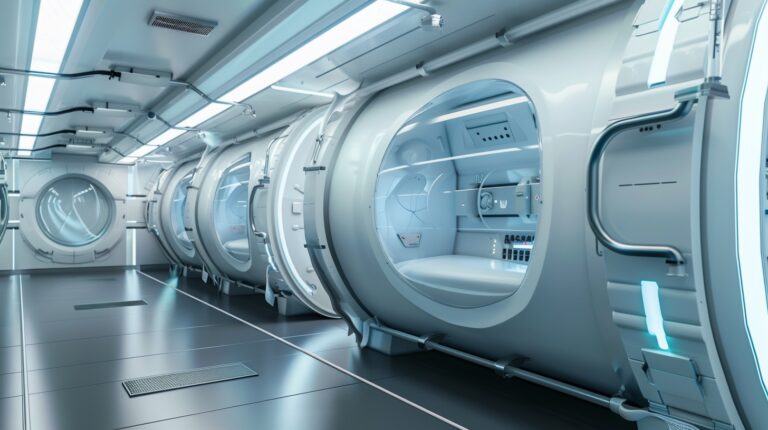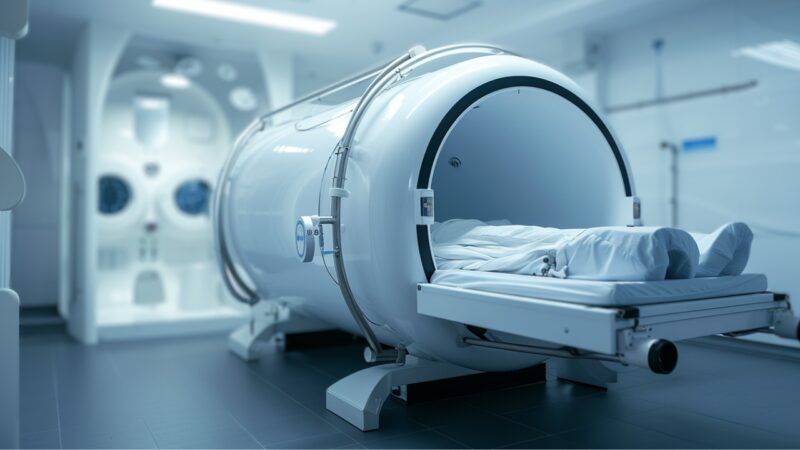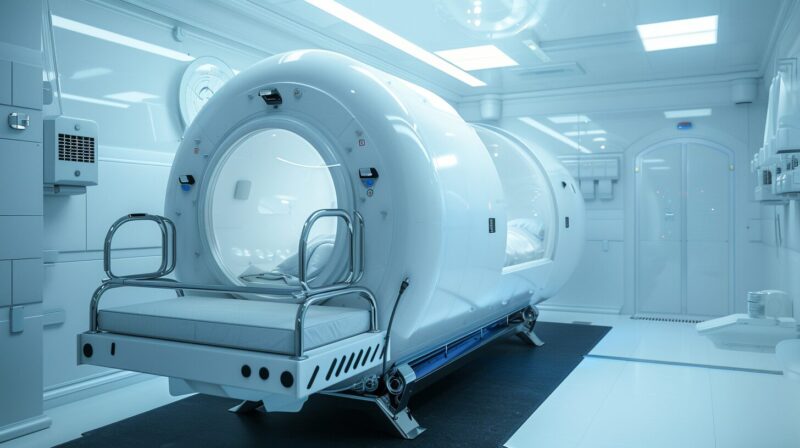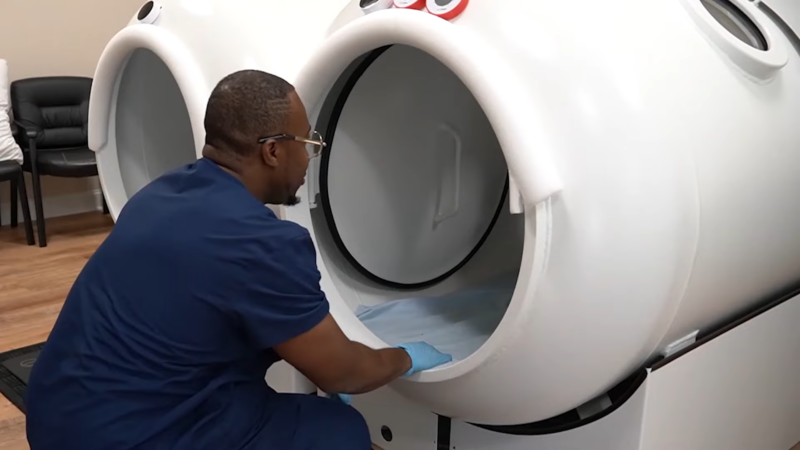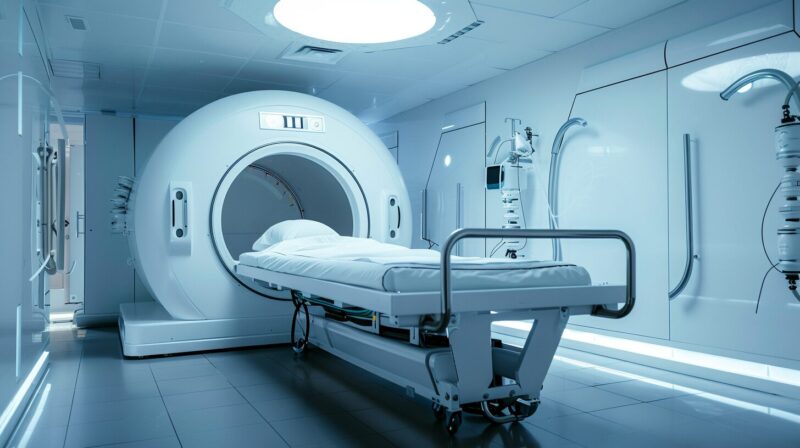When it comes to medical technology, the hyperbaric chamber stands as a remarkable testament to human ingenuity and the relentless pursuit of healing. This sophisticated device, designed to administer hyperbaric oxygen therapy (HBOT), has become a cornerstone treatment for a myriad of conditions, from decompression sickness in divers to complex wound healing.
But what does a hyperbaric chamber actually look like, and what are the intricate details of its structure that allow it to function so effectively? Let’s embark on a visual journey to unravel the mysteries of the hyperbaric chamber’s design and operation.
The Essence of the Hyperbaric Chamber
At its core, a hyperbaric chamber, such as those you can find at oxynergy2.com, is an airtight vessel that allows for the administration of oxygen at pressures greater than atmospheric pressure.
This increased pressure, typically ranging from 1.5 to 3 times the normal atmospheric pressure, allows the body to absorb higher concentrations of oxygen, which can accelerate the healing process and improve the effectiveness of certain treatments.
External Appearance
From the outside, hyperbaric chambers can vary significantly in size and shape, reflecting the diversity in their application and design philosophy. They range from small, cylindrical units designed to accommodate a single individual, often referred to as monoplace chambers, to larger, room-like structures capable of treating multiple patients simultaneously, known as multi-place chambers.
Monoplace Chambers
The monoplace hyperbaric chamber is typically a long, tube-like structure, reminiscent of an MRI machine in appearance. Constructed from durable materials such as acrylic or metal, the chamber is transparent, allowing patients to see outside and healthcare providers to monitor the patient inside.
The cylindrical design not only optimizes the distribution of pressure but also contributes to the chamber’s overall strength and ability to withstand the high pressures required for treatment.
Multiplace Chambers
In contrast, multiplace chambers are more akin to small rooms or capsules, with enough space to accommodate several patients and, in some cases, a medical attendant inside. These chambers often feature a metal construction and are equipped with seats or beds for patients, along with various medical and communication equipment.
The door to a multiplace chamber is typically a thick, heavy structure, designed to seal tightly and ensure the maintenance of the required pressure levels.
Internal Configuration
The interior of a hyperbaric chamber is meticulously designed to ensure patient comfort and safety while optimizing the therapeutic effects of increased pressure and oxygen concentration.
Seating and Bedding
In monoplace chambers, the interior is streamlined, with a stretcher-like bed on which the patient lies during treatment. The focus is on maximizing the use of space while ensuring the patient’s comfort during the typically lengthy treatment sessions.
Multiplace chambers, on the other hand, are more spacious and can be outfitted with individual seats, stretchers, or beds, depending on the specific design and intended use.
Control Panels and Monitoring Equipment
Both types of chambers are equipped with sophisticated control panels and monitoring equipment. These systems allow healthcare providers to carefully regulate the chamber’s pressure and oxygen levels, as well as monitor the patient’s condition throughout the treatment.
The equipment is designed to be operated from both inside and outside the chamber, ensuring that adjustments can be made as needed, regardless of whether the chamber is occupied by a healthcare professional.
Communication Systems
Effective communication is crucial during hyperbaric oxygen therapy. Hyperbaric chambers are therefore equipped with built-in communication systems, allowing patients and healthcare providers to speak to each other throughout the treatment.
These systems are carefully designed to function under the unique conditions within the chamber, ensuring clear and uninterrupted communication.
Safety Features
Safety is a paramount concern in the design of hyperbaric chambers. Advanced safety features are integrated to manage the risks associated with high-pressure environments and oxygen-rich atmospheres.
These may include emergency pressure release valves, fire suppression systems, and fail-safes to prevent over-pressurization. Additionally, the materials used in the chamber’s construction are chosen for their durability and resistance to the high-oxygen environment, minimizing the risk of fire.
The Atmosphere Within
Creating and maintaining the right atmospheric conditions inside the hyperbaric chamber is crucial for the therapy’s effectiveness. The chamber is sealed and pressurized with air or pure oxygen, depending on the type of treatment and the specific chamber design.
In monoplace chambers, 100% oxygen is typically used, while multiplace chambers may utilize a mix of air and oxygen, with patients breathing pure oxygen through masks or hoods.
The Role of Windows and Lighting
Windows play a crucial role in the design of hyperbaric chambers, particularly in monoplace units. They not only allow natural light to enter, reducing the sense of confinement for the patient, but also enable external monitoring by healthcare providers.
Lighting within the chamber is carefully designed to be soothing and conducive to relaxation, with options for adjustment according to patient preference and treatment requirements.
The Journey of a Hyperbaric Treatment Session
A typical session in a hyperbaric chamber involves several key stages, beginning with the sealing of the chamber and the gradual increase in pressure. Patients may experience a sensation similar to that of an airplane ascent as their ears adjust to the pressure change.
Throughout the session, healthcare providers monitor the patient’s condition and the chamber’s parameters, adjusting as necessary to optimize the treatment’s effectiveness. Upon completion, the pressure is slowly decreased, allowing the patient to acclimate to normal atmospheric conditions before exiting the chamber.
Conclusion: A Confluence of Engineering and Medicine
The hyperbaric chamber is a marvel of medical technology, embodying the confluence of engineering prowess and medical knowledge. Its design is a testament to the meticulous attention to detail required to create an environment that can harness the therapeutic potential of oxygen under pressure.
From the robust, yet patient-focused structure of the monoplace chambers to the communal healing environment of the multiplace designs, each element of the hyperbaric chamber is crafted to support the healing journey of those within its walls.
As we continue to explore and understand the complexities of the human body, the hyperbaric chamber stands as a beacon of hope and healing, offering a unique and powerful tool in the fight against illness and injury. LeBron James, a notable advocate of hyperbaric oxygen therapy, has highlighted its benefits in aiding athletic recovery, subtly merging the worlds of sports and medical innovation.
Related Posts:
- Does Mupirocin Help Acne: Understanding Its Role in…
- How Does a Capital Lease Work for A Tech Company -…
- Maximizing Winnings: How To Gamble With Bitcoin Like A Pro
- Does Sonic Take Apple Pay? (Yes, we will explain how)
- How to Grill Frozen Burgers: A Simple Guide for…
- How to Find Someone on Facebook by Phone Number:…
